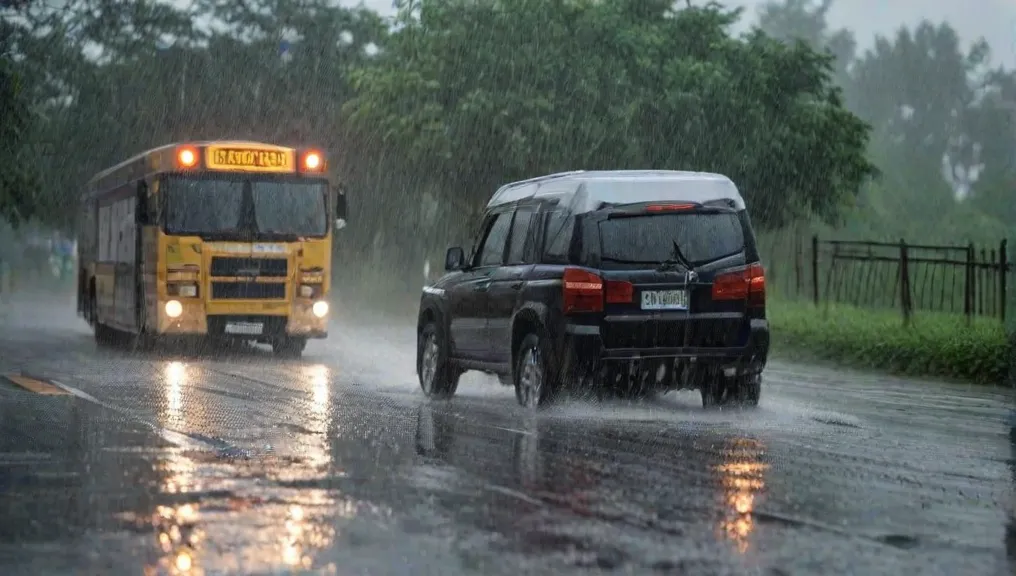Understanding the risks of flooding is essential for safeguarding your home and family. This post delves into the causes and impacts of flooding, from flash floods to river flooding, and provides actionable steps for home preparation, including installing flood barriers, basement waterproofing, and sump pumps. Additionally, it emphasizes the importance of having an effective emergency plan and proper insurance coverage to mitigate financial losses. Learn how to create a robust emergency kit, understand evacuation routes, and secure critical documents to ensure your safety and peace of mind during flood events.
Understanding the Risks of Flooding
Flooding is a significant natural disaster, contributing to widespread damage and disruption. Various causes lead to flooding, including flash floods, river flooding, and coastal flooding. Flash floods often occur due to intense rainfall over a short period, while river floods result from prolonged rainfall, leading to rivers and streams overflowing. Coastal floods arise from storm surges and high tides, exacerbated by extreme weather conditions.

Heavy rain is one of the foremost contributors to flood risks, often linked to extreme weather events like hurricanes, typhoons, and severe thunderstorms. These climatic phenomena can bring about torrential downpours, overwhelming drainage systems and natural watercourses. It is imperative to understand that climate change has intensified the frequency and severity of such weather patterns, making flood preparedness more crucial than ever.
Please, read our post and do not forget to check my YouTube channel “Grig Stamate – Interior Design Solutions”:
https://www.youtube.com/@GrigStamate
You will find here, thousands of ideas for your home interior and outdoors.
Allow me to mention one of them:
House Tours, #7 – Modern Home with A Unique Look (video)
The repercussions of flooding are multifaceted, affecting both individuals and communities. Property damage is perhaps the most immediate consequence, with homes, businesses, and infrastructure suffering from water incursion. The financial burden of repairing flood-damaged buildings can be staggering, often resulting in long-term economic distress. Furthermore, floods pose significant health hazards; contaminated water can lead to waterborne diseases, and mold growth in damp environments can cause respiratory issues.
Environmental impacts of flooding are equally concerning. Floodwaters can erode soil, destroy habitats, and deposit pollutants into rivers and oceans. This can have a domino effect, leading to long-lasting ecological imbalance. Additionally, agriculture can be severely affected, with crops being washed away or damaged by silt-laden waters. Such events can lead to food shortages and price hikes, further impacting human communities.
Historically, significant floods have underscored the importance of preparedness and mitigation. For instance, the 2010 floods in Pakistan, triggered by monsoon rains, affected millions and led to substantial economic losses. Similarly, the 2017 floods in Houston, Texas, caused by Hurricane Harvey, highlighted the vulnerabilities of urban areas to extreme weather events. These examples serve as a stark reminder of the need for robust flood management strategies and community awareness to minimize the devastating effects of future floods.
Preparing Your Home for Potential Flooding
When preparing your home for the possibility of a flood, it is crucial to undertake comprehensive measures to mitigate potential damage. First, checking local flood maps is an essential step to understanding the specific risks associated with your property. Knowledge of these zones will allow for targeted preparation. If your property lies within a high-risk area, consider installing flood barriers or shields around vulnerable entry points such as doors and windows. These physical barriers can significantly minimize water ingress during heavy rains.
Basement waterproofing is another key strategy. Sealing walls and floors with waterproof coatings can provide an additional layer of protection against seepage. Elevating critical utilities, including your furnace, water heater, and electrical panels, is also advisable. Placing these essential components above potential flood levels helps prevent costly damage and loss of functionality during flooding events.
Operational drainage systems are imperative for preventing water accumulation around your home. Ensure that gutters and drains are clear of debris to allow free flow of rainwater. Investing in good landscaping practices can also contribute to proper water diversion. For example, creating rain gardens or installing French drains can effectively redirect runoff away from your property’s foundation. These landscaping options not only mitigate flood risks but also enhance the aesthetic value of your garden.
Another critical preparation involves installing a sump pump in your basement. A sump pump can efficiently remove water that accumulates during heavy rains, averting extensive indoor flooding. It is wise to have a backup power source for the sump pump, such as a battery-powered unit or a generator. This ensures the pump remains operational even during power outages, which are common during severe weather conditions.
By taking these proactive steps, homeowners can significantly reduce the risk of flood damage. Proper preparation not only safeguards the structural integrity of the home but also provides peace of mind during extreme weather events.
Creating an Effective Emergency Plan
In the event of flooding, an effective emergency plan is crucial to ensure the safety and well-being of your family. Floods can strike unexpectedly and escalate quickly, making it essential to have a well-thought-out strategy in place. Developing a family emergency plan begins with establishing a reliable communication strategy. Designate a central point of contact, and ensure every family member knows how to reach them. It’s advisable to have both a local and out-of-town contact and to utilize multiple communication modes such as phone calls, text messages, and social media.
An emergency kit is another vital component of your plan. This kit should contain essential supplies that can sustain your family for at least 72 hours. Key items to include are bottled water, non-perishable food, medications, a first aid kit, flashlights, batteries, and blankets. Don’t forget to consider specific needs such as infant formula, pet supplies, and any necessary medical equipment. Keeping this kit easily accessible in a designated safe spot can save lives.
Knowing your area’s evacuation routes is paramount. Familiarize yourself with the quickest and safest paths to higher ground and emergency shelters. Practice these routes with your family, so everyone is prepared to act swiftly. Ensure your vehicle is fuelled up and equipped with an emergency kit and a full tank of gas.
Staying informed about weather conditions through alerts and warnings can provide critical lead time to respond to an impending flood. Sign up for local emergency alerts and have a battery-powered or hand-crank radio on hand to receive updates even during power outages.
Protecting critical documents and valuables can mitigate long-term impacts. Store items like birth certificates, passports, insurance policies, and financial records in waterproof containers or safe deposits. Additionally, consider digitizing important documents and backing them up on a secure cloud service.
By preparing a comprehensive emergency plan, you can significantly reduce the risks and potential damages associated with flooding. Take proactive steps to ensure your family’s safety and secure your valuable possessions before adverse weather strikes.
Insurance and Financial Preparations
Financial preparedness is a critical aspect of safeguarding your property from the damaging effects of flooding. One of the most prudent steps you can take is to obtain adequate flood insurance. There are various types of flood insurance policies available, each catering to different needs. The National Flood Insurance Program (NFIP) offers standard policies for homeowners, renters, and businesses. It is essential to evaluate the flood risk of your property meticulously. Properties located in high-risk flood zones typically require more comprehensive coverage.
To determine appropriate flood insurance coverage, start by assessing the value of your home and its contents. Consider the potential cost of repairs, replacement of possessions, and temporary housing if needed. Review the specifics of each policy, paying close attention to coverage limits and exclusions. Standard policies may not cover certain types of damage, such as mold remediation or damages to a finished basement. Therefore, it is advisable to read the fine print and ask your insurer any pertinent questions.
In addition to purchasing insurance, reviewing your existing policies is indispensable. Confirm that your current homeowner’s policy doesn’t already include or exclude flood damage coverage. Understand the maximum payout available under each policy, as exceeding coverage limits could leave you with significant out-of-pocket expenses. Staying informed about your policy can significantly ease the recovery process post-flood.
Documenting possessions before a flood event cannot be overemphasized. Create a detailed inventory of your belongings, preferably with photographs and receipts. This record will be invaluable when filing a claim, providing proof of ownership and the condition of your items before they were damaged. Store this documentation in a safe, flood-proof location or digitally where it can be easily accessed after a flood.
Filing a claim post-flood involves several steps. Contact your insurer as soon as possible to report the claim. An adjuster will evaluate the damage, and having thorough documentation can accelerate this process. Be sure to keep all receipts and records of any expenses incurred due to the flood for reimbursement purposes.
Lastly, government and community assistance programs can also provide relief post-flood. Agencies such as the Federal Emergency Management Agency (FEMA) offer grants and low-interest loans to help cover costs that insurance may not fully address. Local community organizations often have resources, such as temporary housing and basic necessities, to help residents manage during recovery phases. Staying informed about these programs and knowing how to access them can further buffer the financial impact of flooding.
Other related posts from our website:
https://howtobuildahouseblog.com/cleaning-a-flooded-basement/
https://howtobuildahouseblog.com/the-high-costs-of-water-damage-understanding-the-financial-impact/
https://howtobuildahouseblog.com/are-the-pipes-damaged-by-boiling-water/
Thank you so much for your attention.
Stay tuned. We will upload many other amazing posts to our website and videos onto our YouTube channel.
Thank you so much.
for your time and attention.
Best Regards
See you to another post,
Bye, Bye

